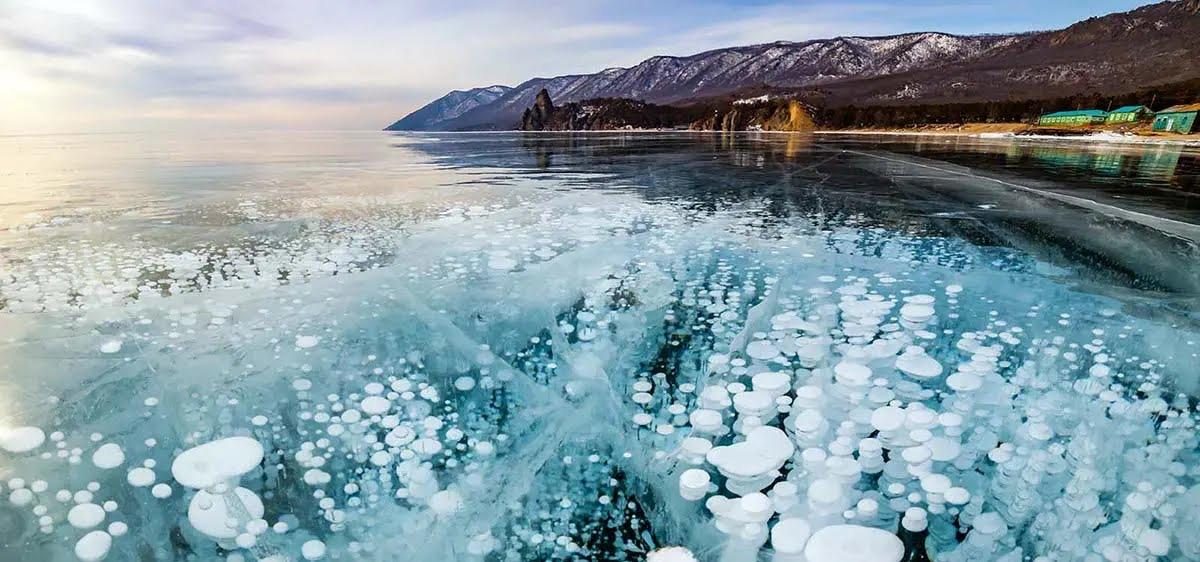Siberia’s Blue Eye – Baikal
When we think of Siberia, we immediately think of an incredibly cold and cruel land. However, Lake Baikal in Siberia is a beautiful contradiction to this idea. The waters of the old and deep lake are azure and surrounded by steep mountains and magnificent wilderness. In addition to its magnificent nature, the region is also home to the opposition Decembrists, Buddhists and ethnic Buryat minority, and is therefore culturally rich.
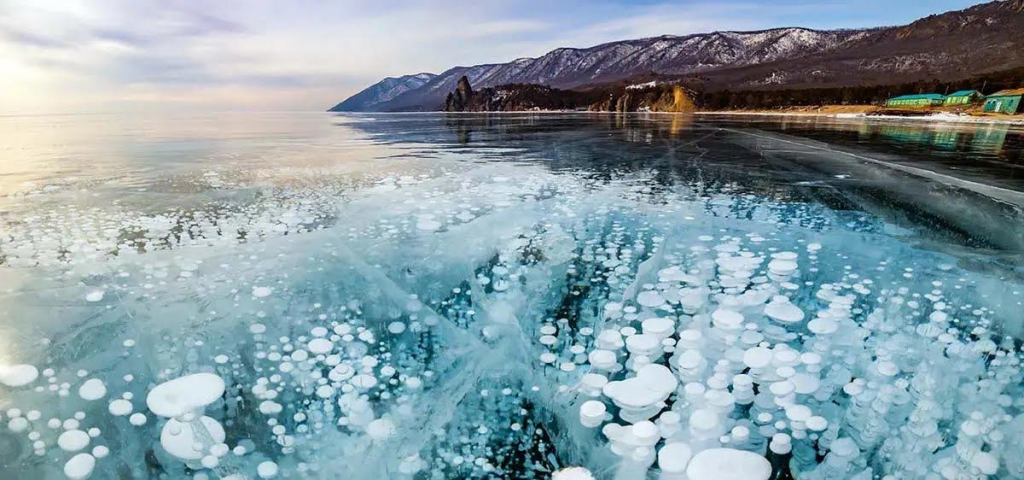
The lake is in southeastern Russia in a valley with a large geological fracture that caused the gradual separation of the earth’s crust. It is actually one of the youngest fractures on our planet and is very active, opening at a rate of 2 centimeters per year. What if it produces movements? Of course, earthquakes happen frequently, and let’s not miss the hot springs that appear. Lake Baikal is 636 km long and 79 km wide. This is Asia’s largest lake and the deepest lake in the entire world at 1642 meters deep. Lake Baikal is divided into two: South and North, they have different depths. How old is the lake? According to the calculations of scientists, Lake Baikal, which is 25 and 30 million years old, is the oldest lake in its geological history. Its waters are super clear and gain more transparency in winter. Currently, the visibility is between 30 and 40 meters, and in the summer between 5 and 8 meters. The waters of the lake are also very rich in oxygen. They have different temperatures based on depth, location and time of year. Thus, in winter and spring the surface freezes and therefore remains like that for almost half a year. In some places the ice can reach up to two meters thick. Later, when the waters break, it starts to warm up little by little and maybe in August in midsummer the waters rise to a little over 15, 16 ºC in some places.

Irkutsk, the Unofficial Capital and Home of the Opposition
Irkutsk is both a modern city and a town that perfectly reflects Siberia’s past. The Irkutsk Regional Museum houses Evenk artifacts and ritual objects of shamans, and a statue of Lenin is located in the main square of the city. The glamorous wooden houses date back to the time when the Russian aristocrats, the Decembrists, were exiled by the Tsar. Try to see the most impressive example of this architectural style, the Volkonsky House-Museum.

Tourism on Lake Baikal
Basically there are two tourist stations. The first ice season begins in mid-January and lasts until mid-April. The thickness of the ice supports the arrival and departure of vehicles. super transparent ice, including bubbles. So it’s a great time walking, cruising, skating or even biking by the lake.

There is a route of about 200 kilometers on the ice surrounding Olkhon Island. There are a lot of ice fishermen out here, it’s a very popular thing and it all lasts until mid-April when the temperature starts to rise and the ice becomes more fragile. There is no shortage of death, so be careful.
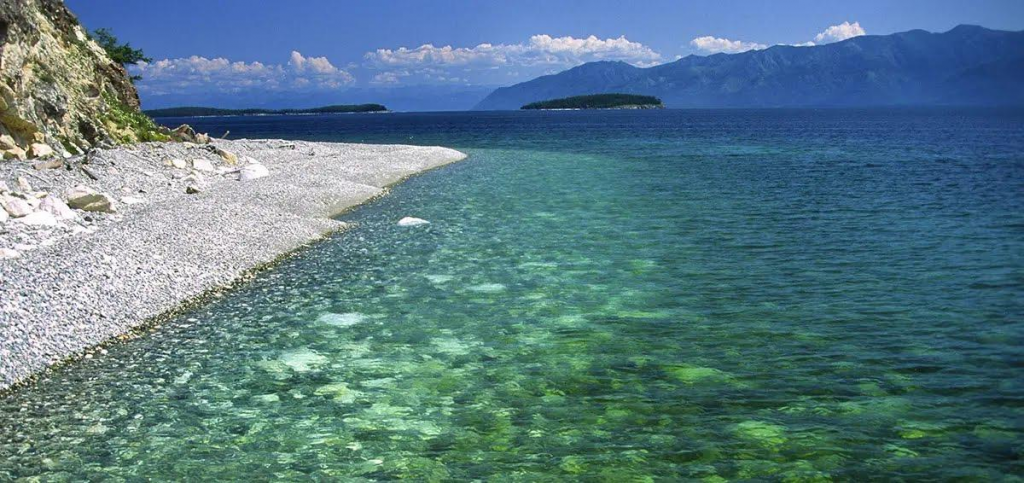
The second tourist season is summer on Lake Baikal. mountain roads, for example, through mountains such as the Baikal Mountain Range and the Barguzin Mountain Range. There are plenty of super popular trails, the best of which start at Listvyanka, run along the lakeshore, and end at Bolshoye GHoloustnoye, but you can do less. Since there is no ice in the summer, it is the season for sailing and boat tours, it is time to see the birds and also to fish in the traditional way. In general, the center of the lake’s tourism operations is within the village. Khuzhir, and also Listvyanka. From this village, the city of Irkutsk is two hours away, and you can get here by plane. Another lakeside destination, Severobaykalsk, is on the north shore.
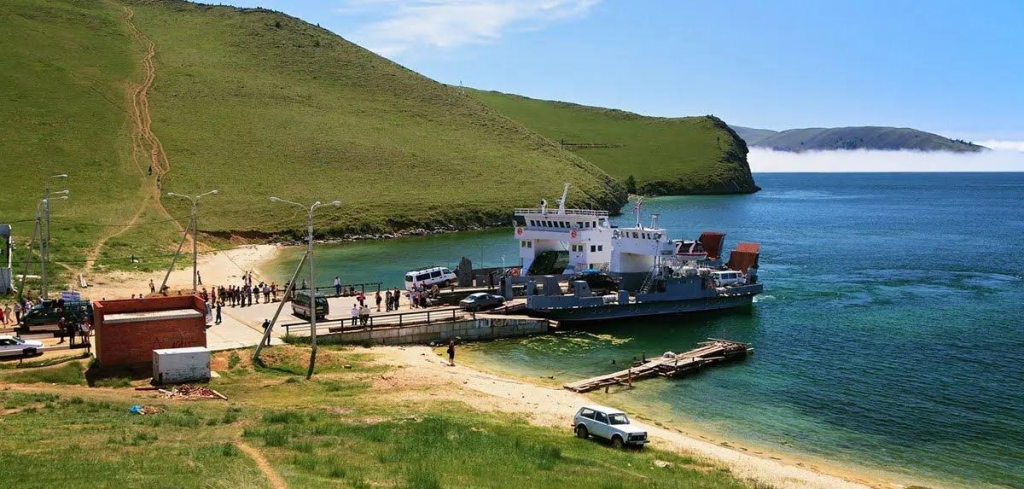
Among the many islands in the lake, as we said earlier, the most popular is Olhon, with several villages. There are lush, rocky cliffs and pine trees everywhere. It is 250 km from Irkutsk. You arrive by ferry from May to December. You take the bus from the Irkutsk Central Bus Station, four times a day, or from the Central Market and then the ferry. The cheapest option, around 20 euros. Another option is the fast boat from Irkutsk to Olkhon. The ferry departs from VSRP (East Siberian River Transport) every Monday at 8:30 AM and arrives in Khuzhir at 5:15 PM. Then continue the journey on the opposite side of the lake for the opportunity to see the east side. The boat returns to Irkutsk on Tuesdays, completing the circular route. This service is only active from July 7 to August 24 and adds another service on Wednesdays from the last week of July to the first of August.
Although Olkhon is not as touristy as Listyanka, its infrastructure is good: there are bike and motorbike rental agencies, hotels and various water activities… Khuzhir is the heartland village in the middle of the island and 20 minutes from the ferry port. The village is a small and picturesque place 10 minutes from the beach with its shops and cafes around the main square. There is a bus stop and shuttle service departing from the Svetlana tourist rental house. Tickets are sold here.
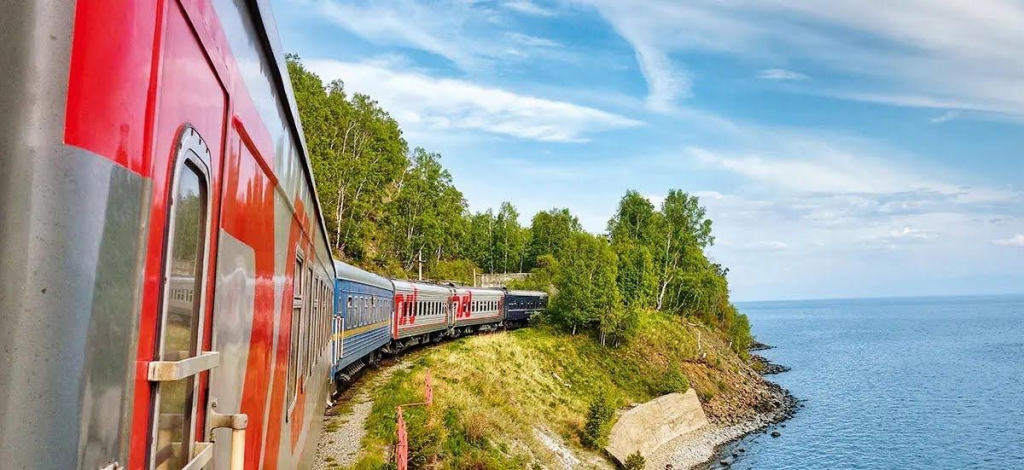
The Shaman’s Cave on the island is a sacred place, visit the abandoned village of Peschanaya (with a Soviet fish factory), a rock formation called Cape Khoboy or Tres Hermanos. The beaches are four kilometers from Khuzhir, surrounded by pine forests. Basically, this is what it means to wander around Lake Baikal. A wonderful and beautiful way to reach the lake is to travel through Trans Siberia. Once you enter the region, transportation vehicles, ship tours, fishing boats, motorcycles, rental cars, trains, helicopter tours will welcome you.
The lake has extensive land, so your journey is not short. The journey from Irkutsk to Olkhon Island takes six hours, the journey to the wild beaches east of the lake, to Goryachinsk, takes five hours. Going by boat is undoubtedly much better than following the route. From Irkutsk to Listvyanka by ferry, there are three speedboats a day and an hour’s journey that costs about 20 euros. There is also a ferry connection to the east coast during the summer months. The fact is that there is no route around the lake. However, you can reach certain points in the south by car or by ferry to Olkhon Island. Of course, there are costs to getting gas here, so try to keep that in mind.
Taste Listvyanka’s Dishes

Listvyanka is the most popular of the villages of the Baikal region, with quaint wooden cottages spread over three valleys on the shore of the lake. You can buy smoked omul (Baikal whitefish) and shashlik (grilled skewer) from the waterside market and have a picnic on the pebbly beach. Walk up to the top of the cruise for a perfect view of the lake, see the statues made from Soviet auto parts in Retro Park, or get to know the life deep in Lake Baikal in the Baikal Museum aquarium.
Buddhist Site in Russia
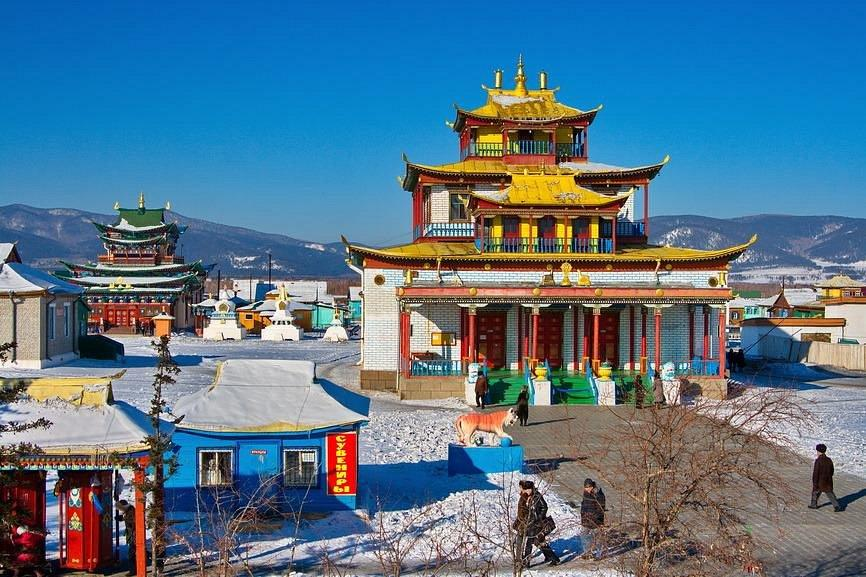
Ivolginsk Datsan is the largest and most important Buddhist center in Russia. Gaze at the white statues and trees adorned with colorful prayer flags as you walk around the complex of brightly colored temples and unpretentious monastic buildings. Spin the prayer wheels, watch the giant Buddha statue presented with coins, colored silk and brass, and listen to the chants in the spaces filled with the smoke from the monks’ incense.
Turn The Route To The Hot Springs
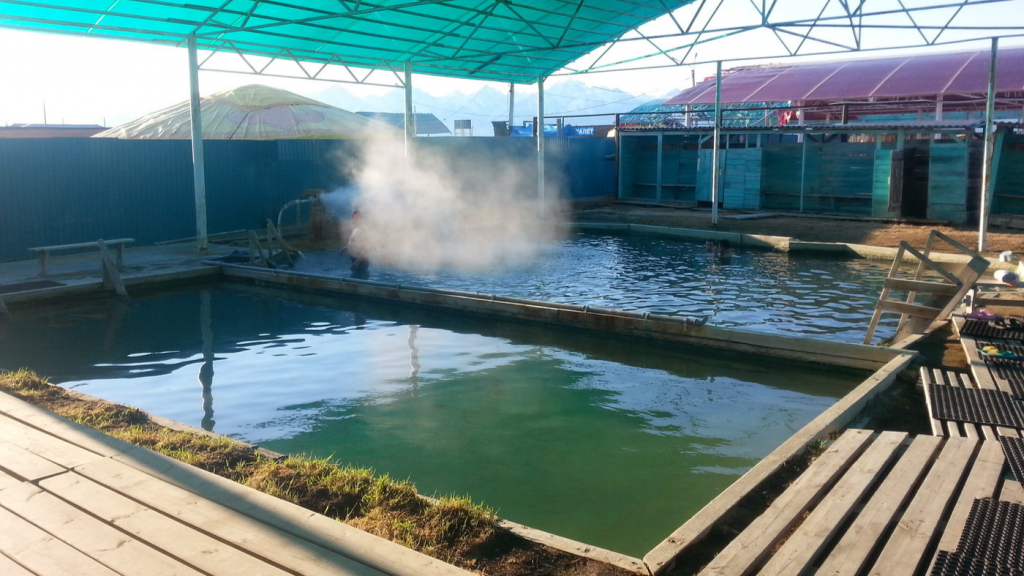
The lands around Lake Baikal come to life especially with the thermal springs of Arşan, a small town located at the foot of the snow-covered Eastern Sayan Mountains. The town itself is in ruins, but although the splendor of the 1920s Arshan Spa is no longer there, the healing (and believed to cure many ailments) properties of the slightly sulphurous mineral water still continues to benefit.
Rich flora and fauna
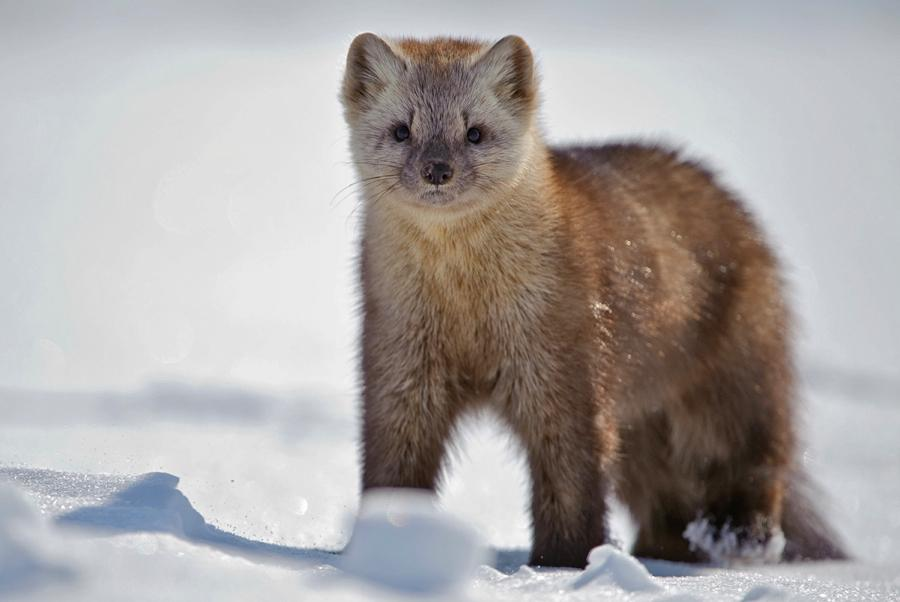
The lake has rich fauna and flora, more than 1000 plant species and 2,500 animal species. About 80% of these are endemic species. Foxes, Siberian deer, bears, marmots… That’s why it’s an idyllic destination for nature lovers.



